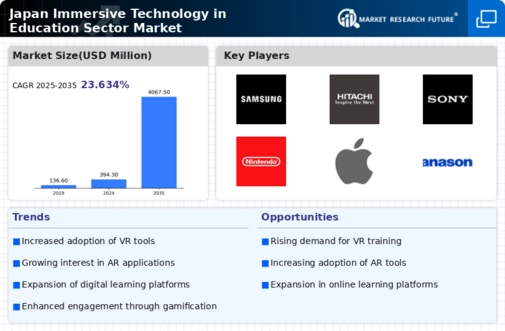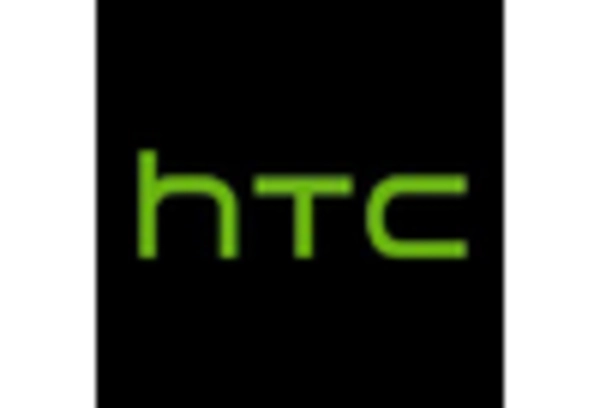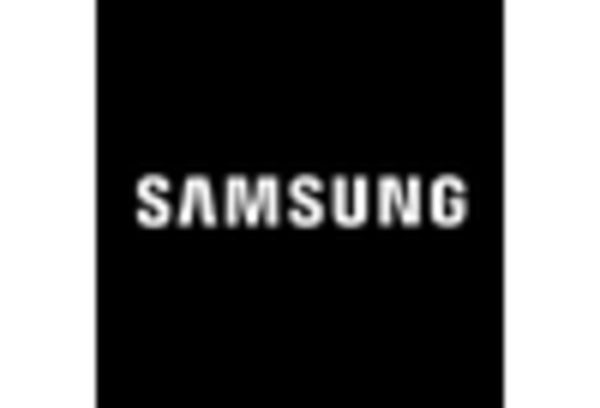Increased Focus on STEM Education
The immersive technology-in-education-sector market in Japan is significantly influenced by the heightened focus on STEM (Science, Technology, Engineering, and Mathematics) education. The Japanese government has prioritized STEM initiatives to prepare students for a technology-driven future. This emphasis is reflected in the curriculum, where immersive technologies are increasingly integrated to facilitate hands-on learning experiences. Reports indicate that around 70% of schools are incorporating immersive tools to teach STEM subjects, which enhances student interest and understanding. This trend is expected to contribute to a market growth of approximately 20% over the next five years. The alignment of immersive technology with STEM education is thus a crucial driver for the market, fostering a new generation of skilled professionals.
Growing Investment in EdTech Startups
The immersive technology-in-education-sector market in Japan is witnessing a surge in investment directed towards EdTech startups specializing in immersive solutions. Venture capitalists and educational institutions are increasingly recognizing the potential of immersive technologies to transform learning experiences. In 2025, investments in EdTech startups are projected to reach $500 million, with a significant portion allocated to companies developing VR and AR applications for education. This influx of capital is likely to accelerate innovation and the development of new immersive tools tailored for various educational needs. As startups continue to emerge and thrive, their contributions to the immersive technology-in-education-sector market are expected to drive growth and diversification in the offerings available to educators.
Rising Demand for Interactive Learning
The immersive technology-in-education-sector market in Japan experiences a notable surge in demand for interactive learning experiences. Educational institutions increasingly recognize the potential of immersive technologies, such as virtual reality (VR) and augmented reality (AR), to enhance student engagement and comprehension. According to recent data, approximately 60% of educators in Japan believe that immersive technologies significantly improve learning outcomes. This growing acceptance is likely driven by the need for innovative teaching methods that cater to diverse learning styles. As a result, schools and universities are investing in immersive solutions, which could lead to a market growth rate of around 25% annually over the next few years. The emphasis on interactive learning environments is reshaping the educational landscape, making it a critical driver for the immersive technology-in-education-sector market.
Enhanced Collaboration and Communication Tools
The immersive technology-in-education-sector market in Japan is being propelled by the development of enhanced collaboration and communication tools that leverage immersive technologies. These tools facilitate real-time interaction among students and educators, regardless of geographical barriers. The rise of remote learning solutions has underscored the importance of effective communication in education. Approximately 55% of educators report that immersive collaboration tools improve student participation and teamwork. As educational institutions increasingly adopt these technologies, the market is likely to experience a growth rate of around 15% annually. The ability to create immersive, collaborative environments is thus a vital driver for the immersive technology-in-education-sector market, fostering a more connected and interactive learning experience.
Technological Advancements in Hardware and Software
The rapid advancements in hardware and software technologies play a pivotal role in propelling the immersive technology-in-education-sector market in Japan. Innovations in VR headsets, AR applications, and educational software are making immersive learning more accessible and effective. For instance, the introduction of lightweight, affordable VR headsets has lowered the entry barrier for educational institutions. Furthermore, the integration of artificial intelligence (AI) into immersive platforms enhances personalized learning experiences. Market analysts project that the hardware segment alone could witness a growth of 30% by 2027, driven by these technological improvements. As educational institutions seek to adopt cutting-edge tools, the continuous evolution of immersive technologies is likely to remain a significant market driver.

















Leave a Comment